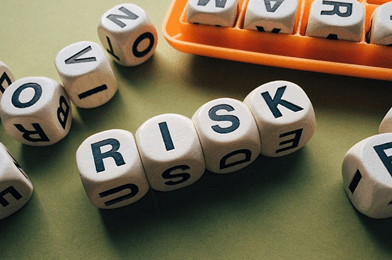As a business owner or manager, you know that there are risks that can come from many areas, both financially and legally, as well as personal risks relating to your mental and physical health and more.
While leading a firm can be very rewarding, it also comes with many challenges, and there are just as many threats to look out for as there are opportunities. However, you can take steps to limit risk and expose yourself and your company to fewer potential issues. Here are three steps you can take to achieve this enhanced security in 2022.
Contents
Start by Assessing Potential Risks
When it comes to risk management, start with understanding what things could go wrong for your organization and where the most significant risks lie. What might pose a threat right now, in the coming weeks and months, and what could be a potential issue in years to come? There will be both internal and external threats that could be preventable.
As you consider areas where things could crop up, consider general issues that can affect any business, such as computer hacks, terror attacks, recessions, and natural disasters. There are also potential hazards such as car accidents, falling objects, slips and trips, collapsing buildings, and exposure to pollution or other toxins, among other factors.
Examine your specific business and the industry you’re in to see what might be more likely to pose a threat to your organization. For instance, if you bring in or export goods from or to foreign markets, currency fluctuations are involved. Political instability or changes in laws and other regulations could also affect part or all of your operations if you trade in multiple locations around the country or the world.
Factor in aspects such as supplier risk management, if you buy a lot of inventory, financing costs for loans and investment, and cashflow problems if you have a lot of clients who always pay for goods or services on 30-day or other longer-term payment setups. Plus, consider threats from market competitors, changes in your industry or in technologies, and costs, breakages, and maintenance of equipment. There are also the downsides of losing staff members and all the knowledge they had.
Plan Out as Much as Possible to Avoid Problems
Once you have a good idea of where things can potentially go wrong, it’s time to do the planning needed to prevent as many of these problems as possible. Take your business plan and go over it with the risks you’ve written down in mind. Update the plan accordingly.
For example, your business plan should cover your organization’s likely investment needs and financial projects, plus sales and marketing strategies, ideas for expansion, customer analysis, and your take on the current and future marketplace. Ensure you complete a detailed SWOT analysis, too. This is a tool where you look at your business’s strengths, weaknesses, opportunities, and threats and plan out how to take advantage of or limit them accordingly.
Your planning should involve the creation of an emergency management plan, too. You need to develop a roadmap for you and other leaders in your team plus employees to follow if any risks become an actuality. The emergency management plan should spell out step-by-step details on how people should handle internal and external emergencies as they arise. List instructions in order of when they should be executed and put together checklists for personnel to follow. Discuss your plans with your teams to get their insights on ways to improve clarity and ensure procedures are detailed enough, too.
Complete Specific Tasks to Reduce Risks
Lastly, you’ll want to invest the time, energy, and funds required into proactively taking measures to mitigate risks and reduce adverse outcomes if they come to pass. For example, train employees on reducing accidents in the workplace and otherwise limit the chances that they and their colleagues get hurt through accidents. Keep offices and warehouses and the like clean and tidy. All equipment and vehicles must be adequately maintained and traded in for newer models as needed to reduce the chances of malfunctions or other issues.
 Store and ship hazardous goods very carefully and get insurance to cover different facets of your operations as needed. You can also take the steps necessary to secure digital devices and accounts, keep hackers at bay, and maintain and back up data and proper records. Keep diversifying income areas over the years and pay close attention to cashflow and other financial and legal matters.
Store and ship hazardous goods very carefully and get insurance to cover different facets of your operations as needed. You can also take the steps necessary to secure digital devices and accounts, keep hackers at bay, and maintain and back up data and proper records. Keep diversifying income areas over the years and pay close attention to cashflow and other financial and legal matters.
These are some of the ways you can protect your organization in 2022 and beyond by understanding and reducing risk. Avoid burying your head in the sand about what could go wrong and instead be proactive, so you help your business to stand in good stead even when things don’t go to plan.




